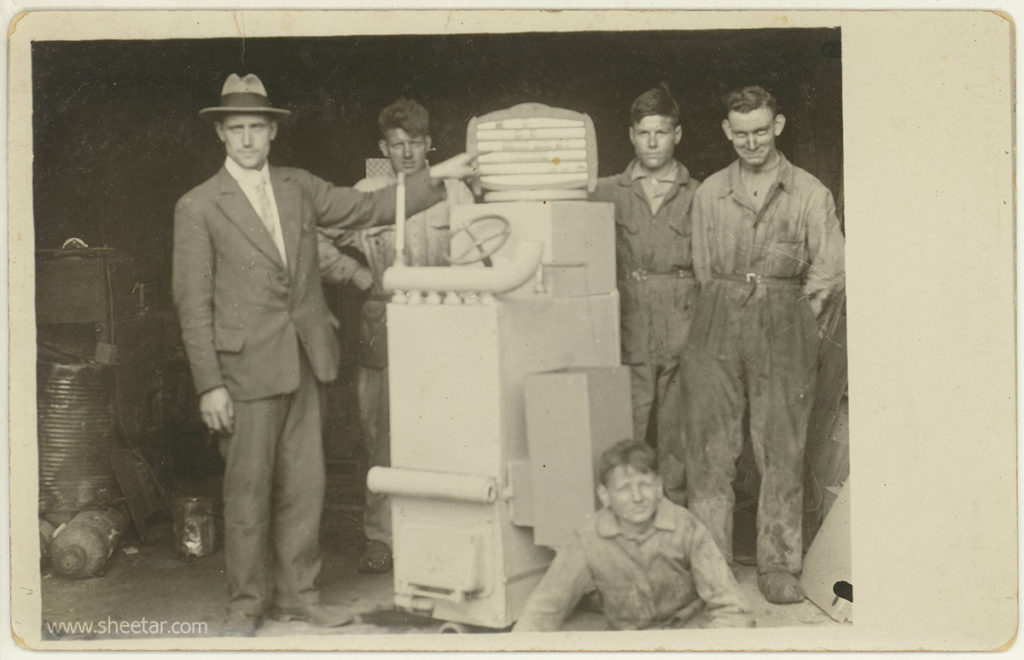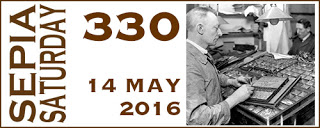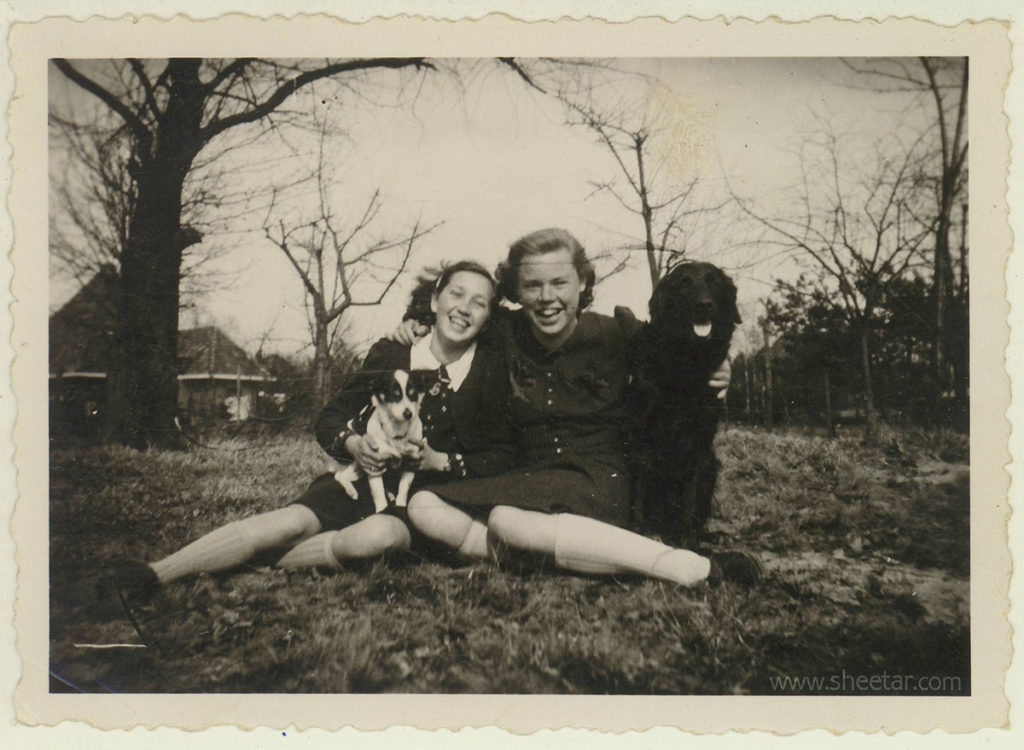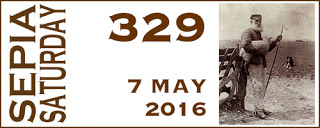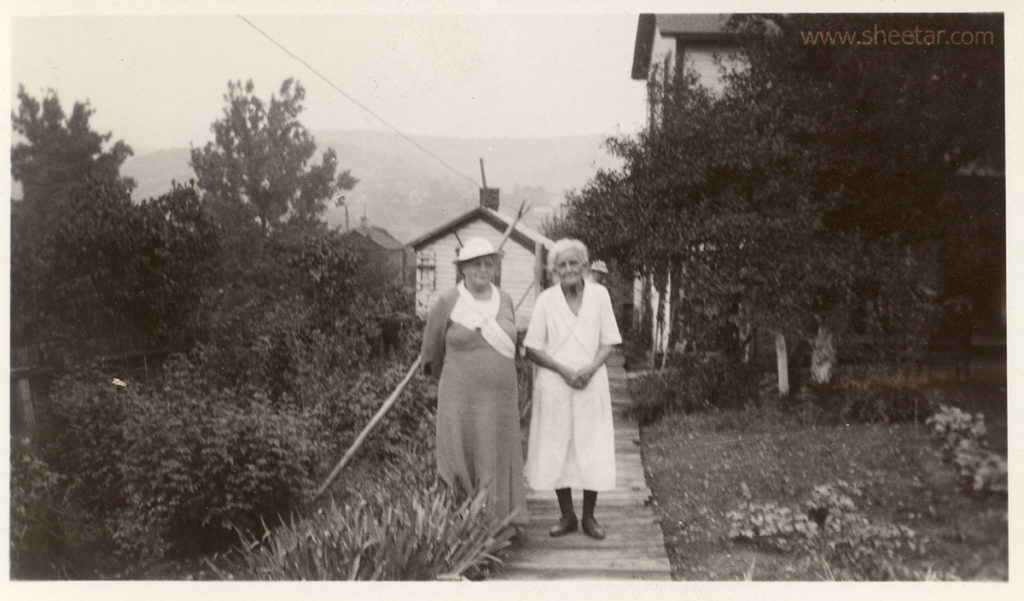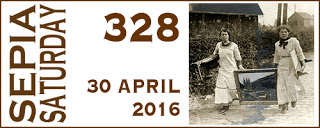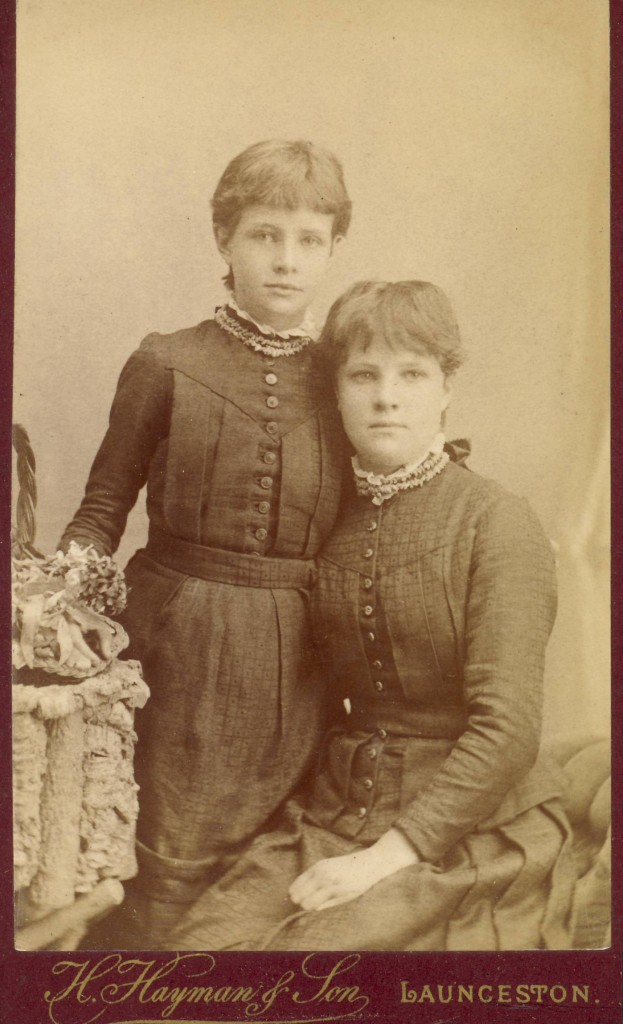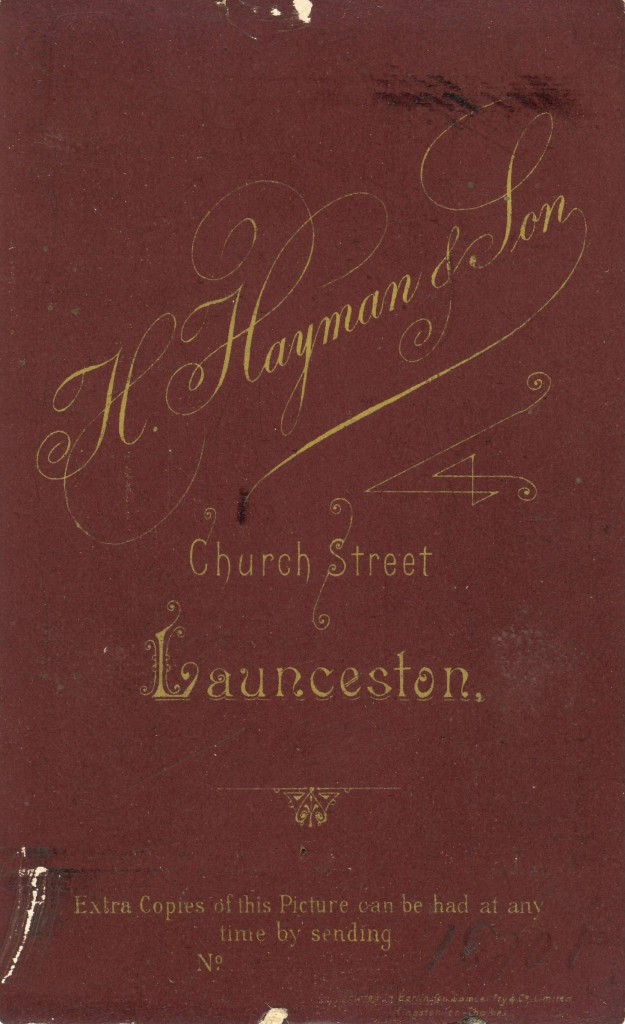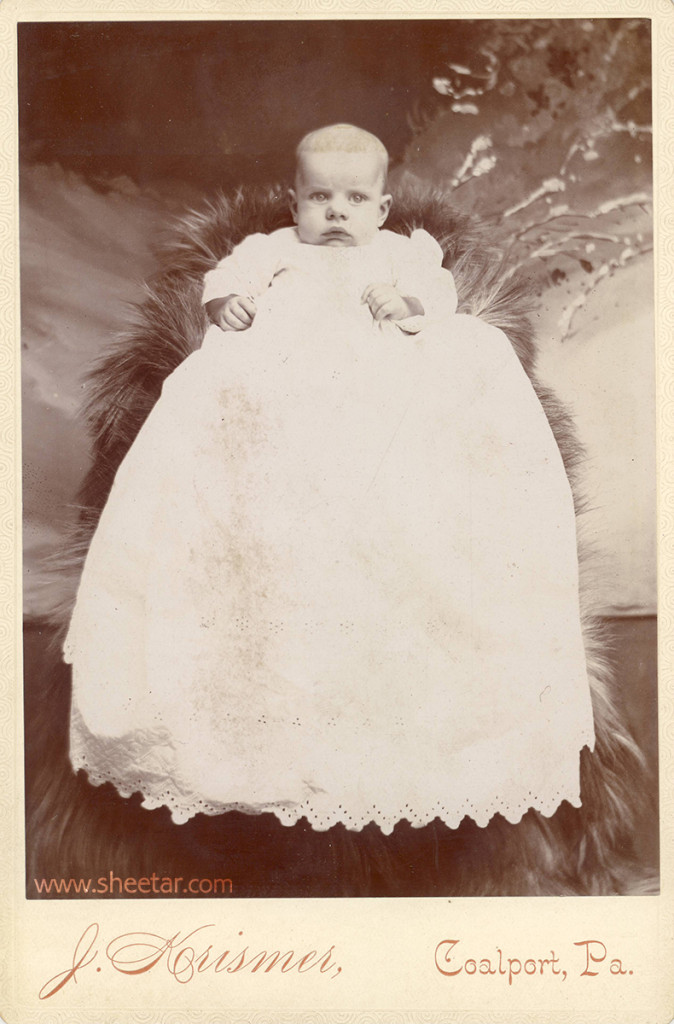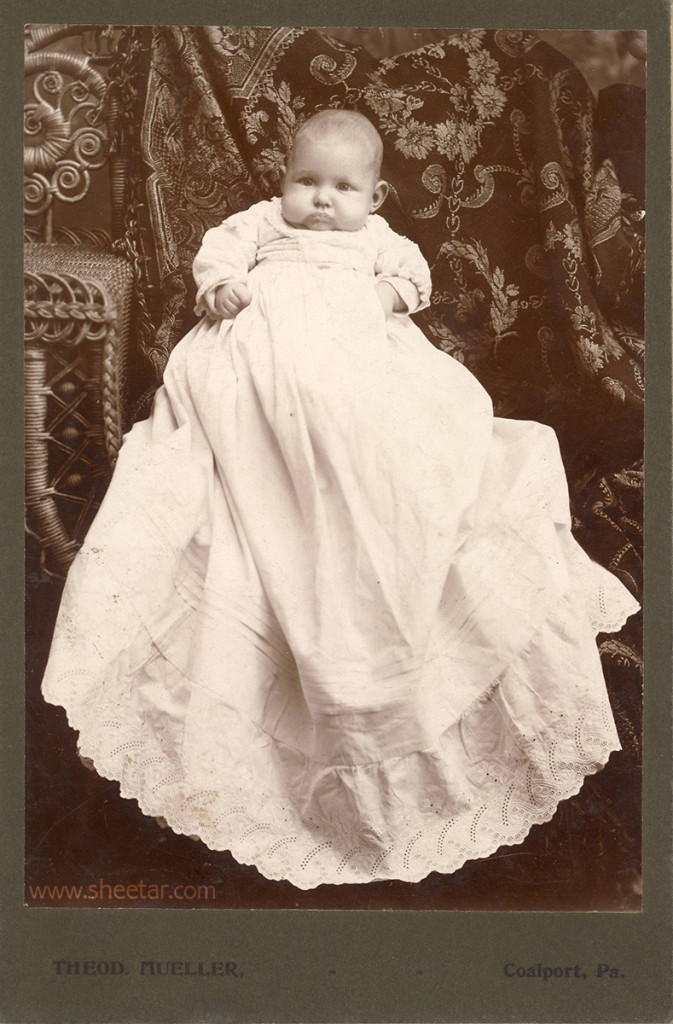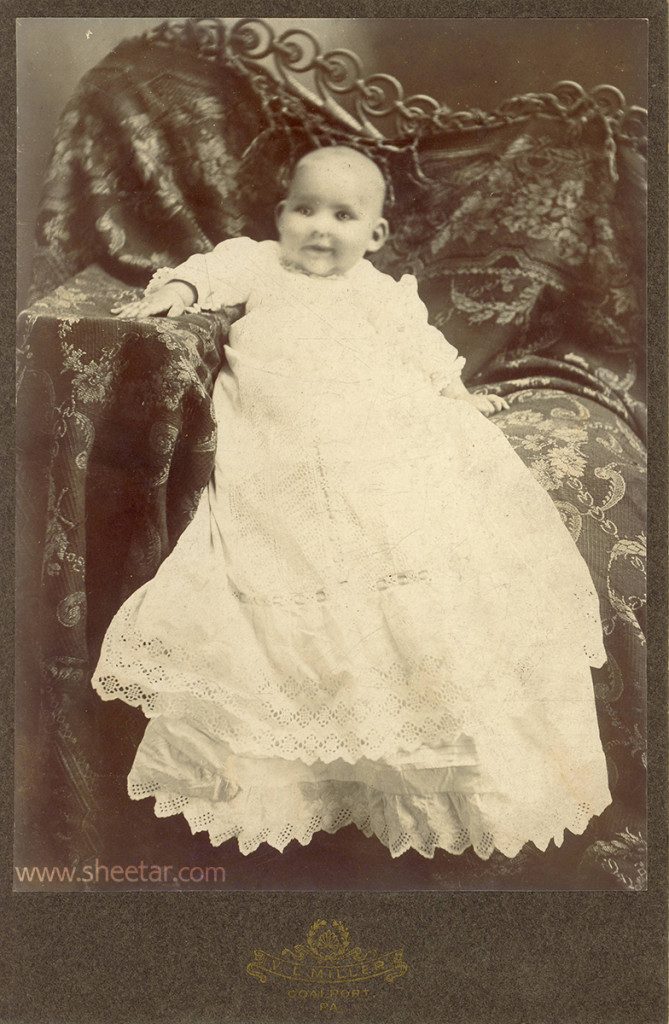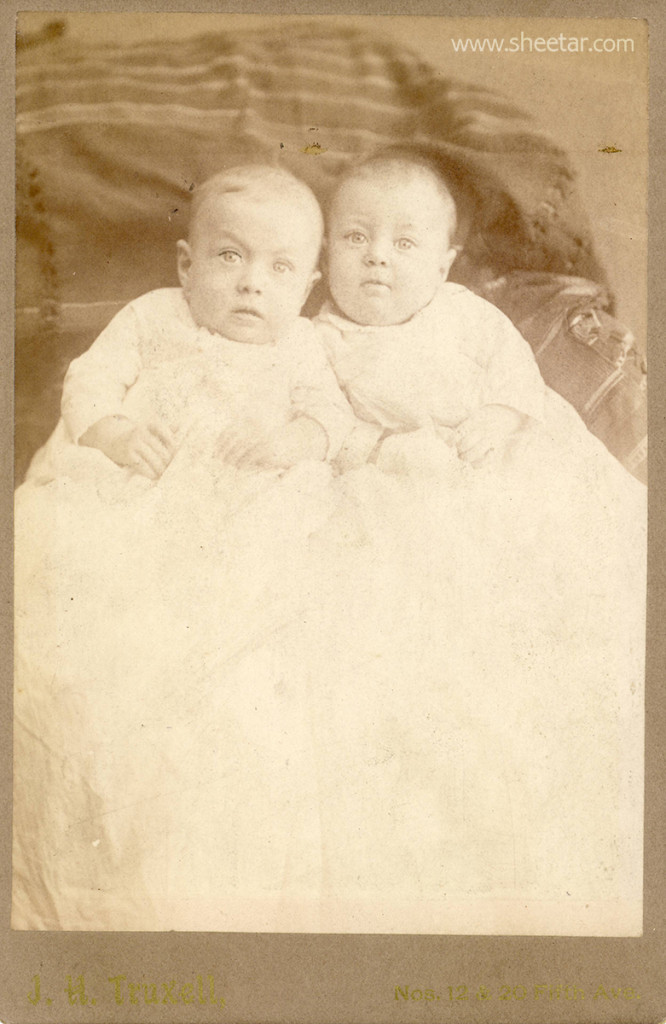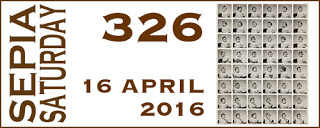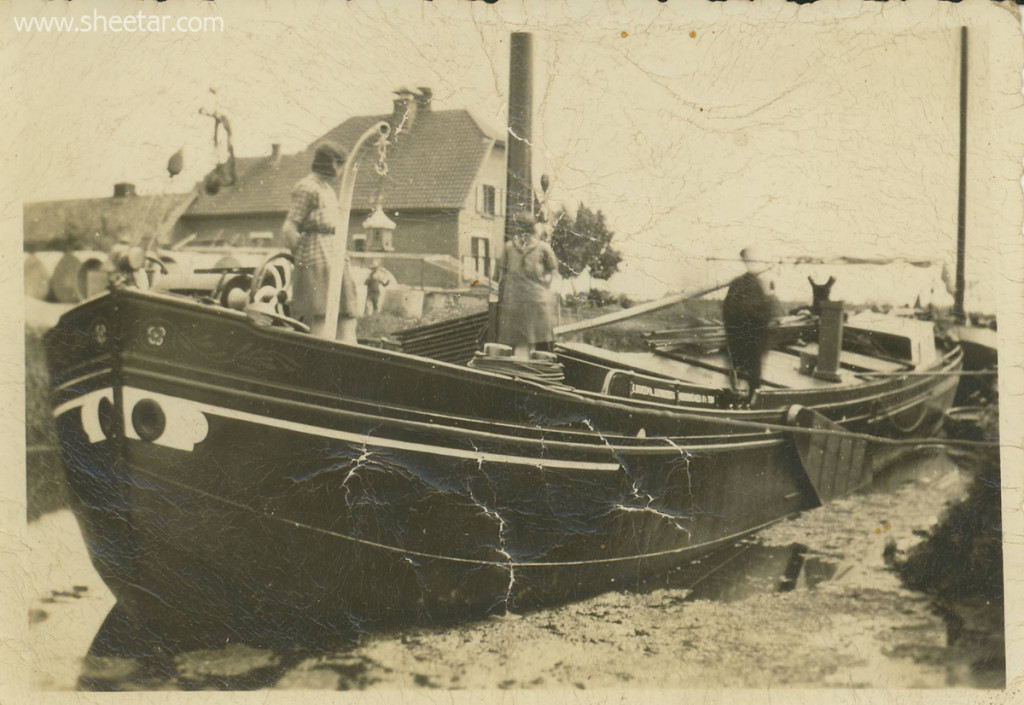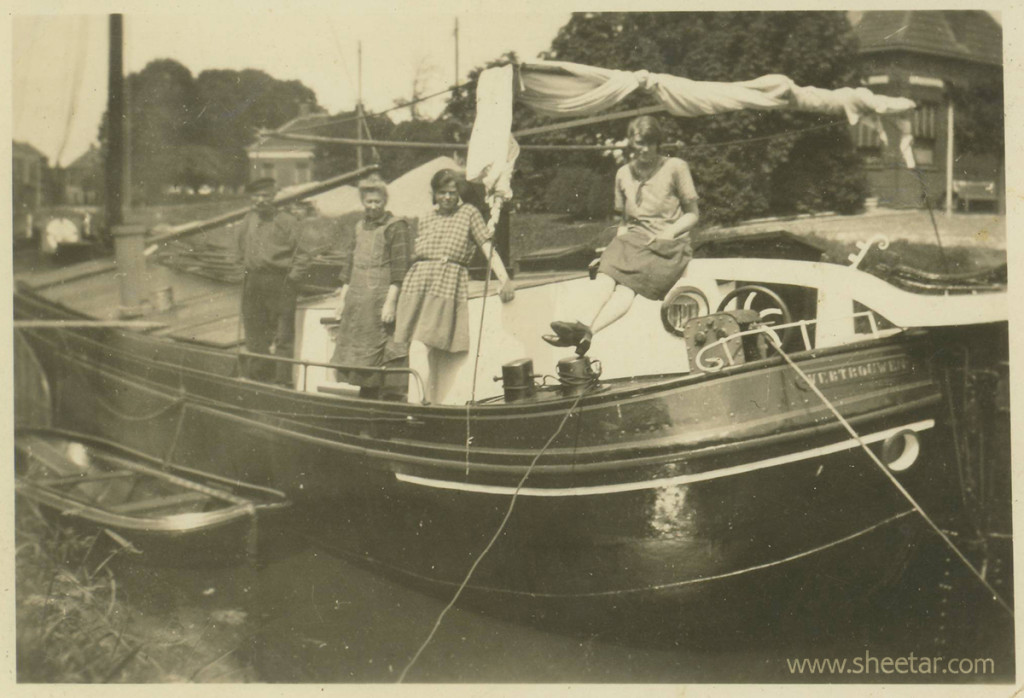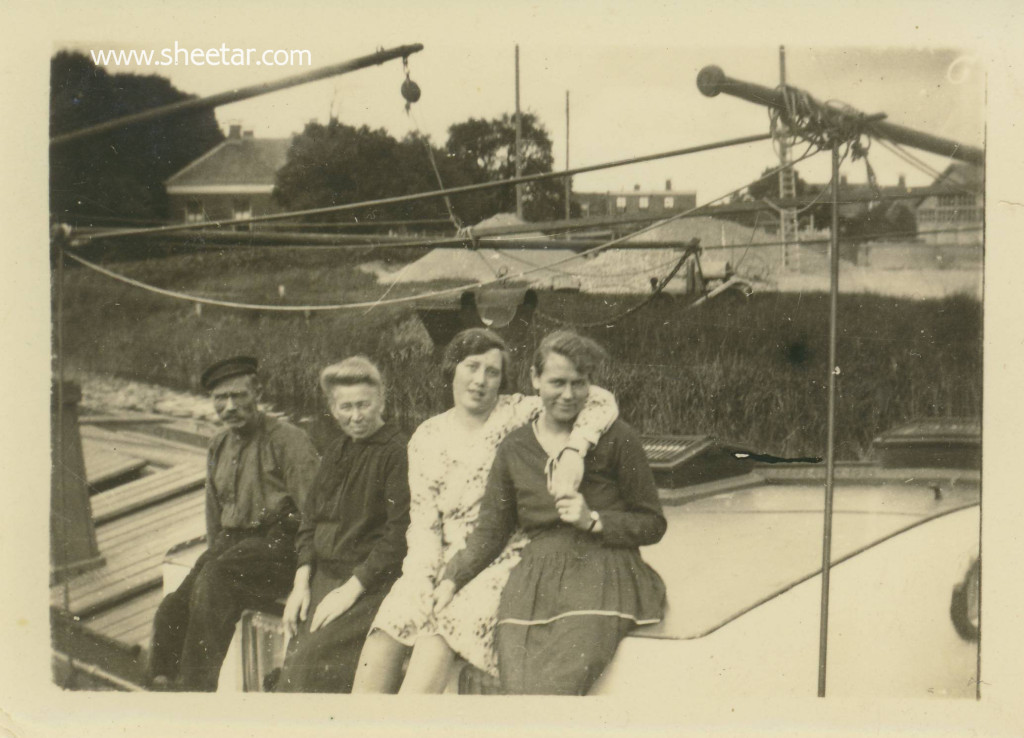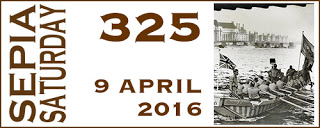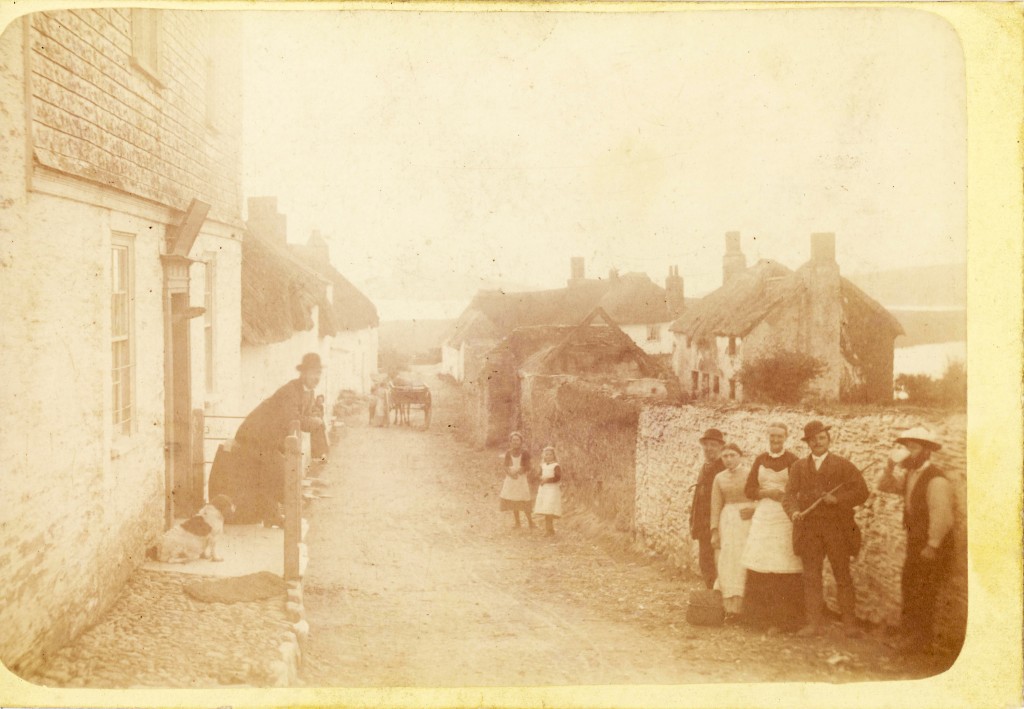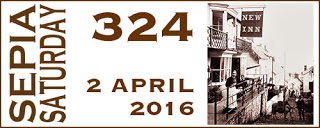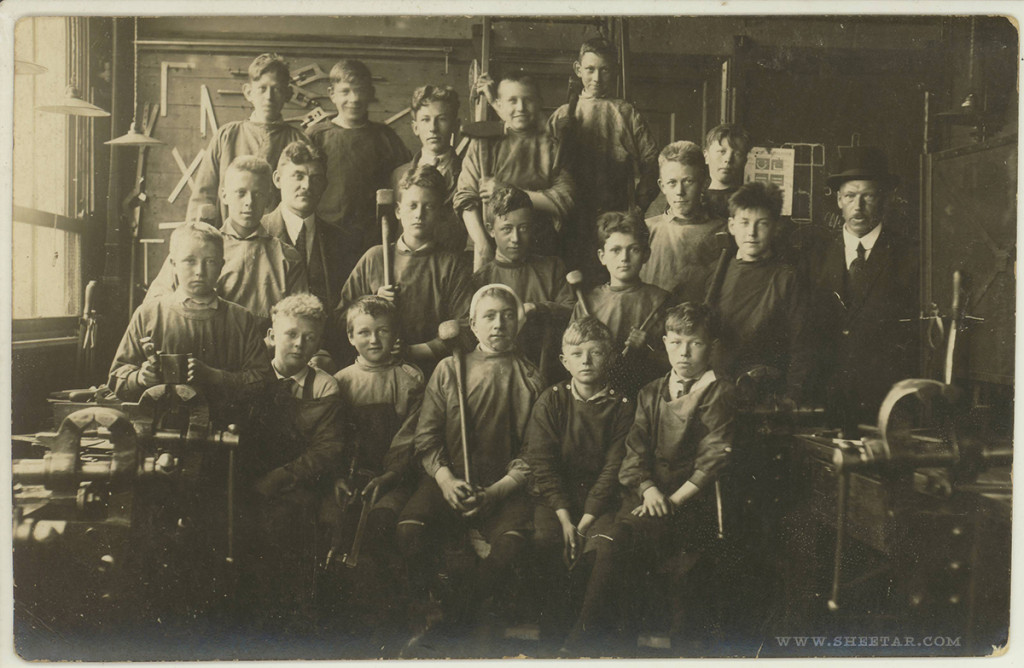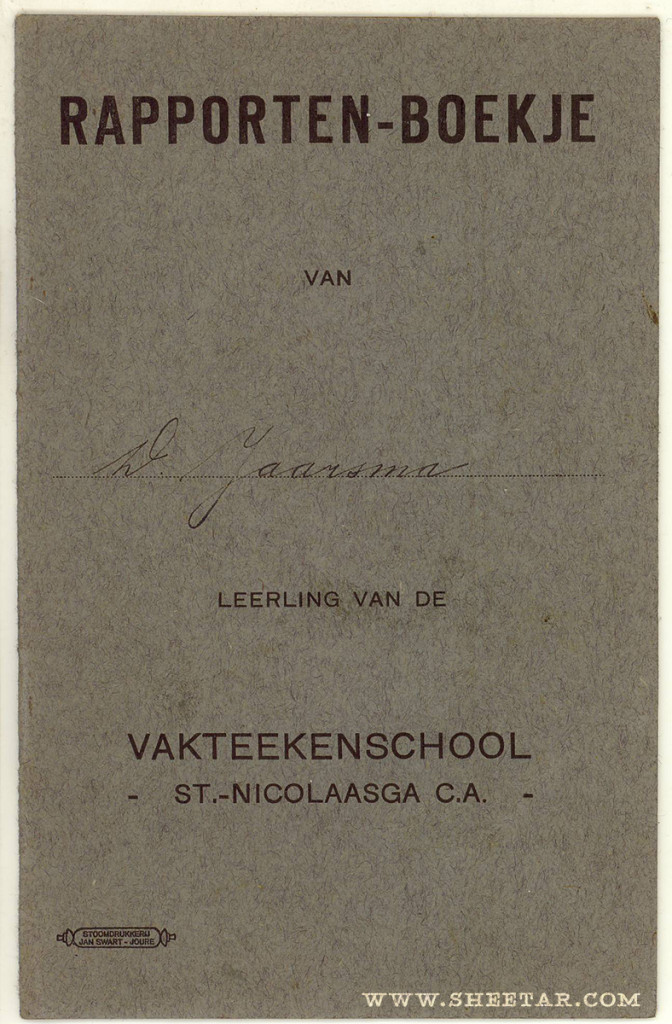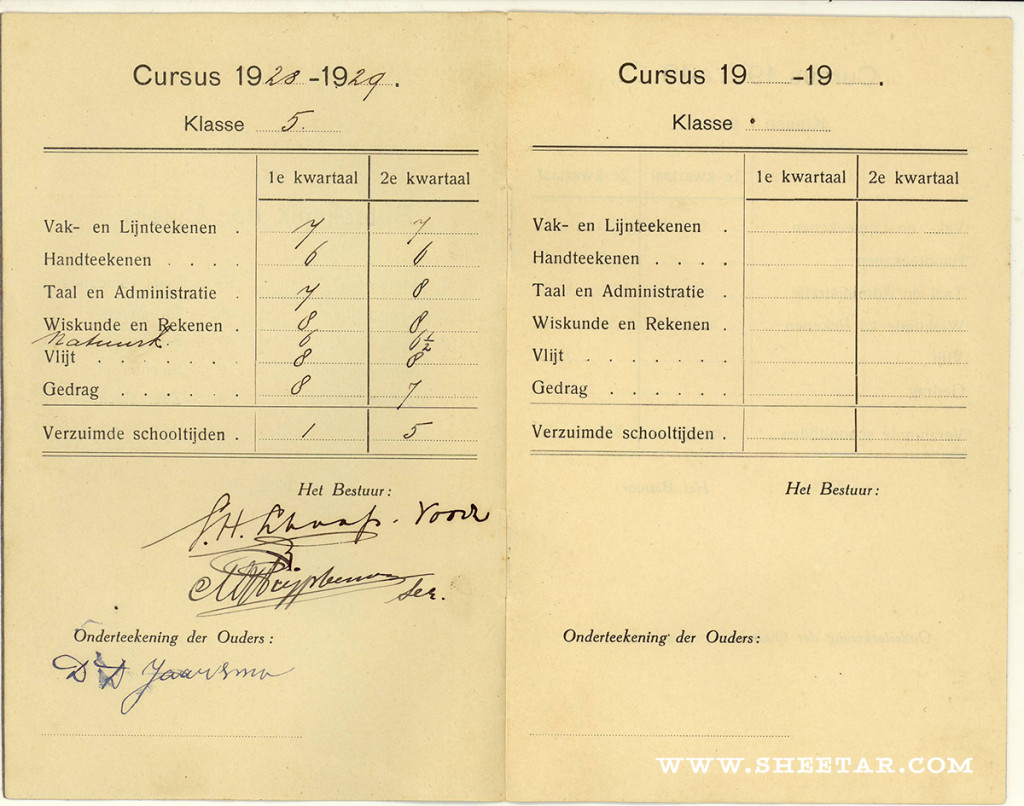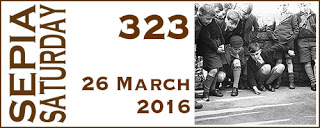The prompt image for this week’s Sepia Saturday featured a man doing type-setter work and came from the collection of the Netherlands National Archives. I don’t have any type-setters in the family, but I do have young men at work, and the photo was taken in the Netherlands! The man standing on the far right, hands behind his back and a grin on his face that makes you wonder what he was up to, is Doede Jaarsma, my husband’s grandfather. Doede went to a technical high school in Friesland, Netherlands and later apprenticed and became a blacksmith which would explain the dirty coveralls and wooden shoes. They certainly look like they just finished working and are showing off some new creation, but what exactly that creation is, I have no idea! It almost looks like a motorized washing machine with the sort of wringer device on the top. There’s a handwritten note on the back that reads, “Douglas at work, Uithuizen, ’43??” which would probably have been written on after they came to the USA since it shows his Americanized name. In 1943, he would’ve been recently married and living near his wife’s family in Uithuizen, so that makes sense. It’s a fantastic photo though, and I just LOVE that grin on Doede’s face – he looks like he’s positively up to no good.
In other news, I have a small update on an older post, Sepia Saturday 325. Apparently the barge from that post is still in operation! The couple who currently own it got in touch with me as a result of that blog post and updated me on what she looks like now and how she’s running. It’s absolutely fantastic that Sepia Saturday has encouraged me and enabled me to post these photos in a blog format where they get a little better exposure than they otherwise would sitting on my hard drive, and that it’s given me an opportunity to connect the past to the present.

